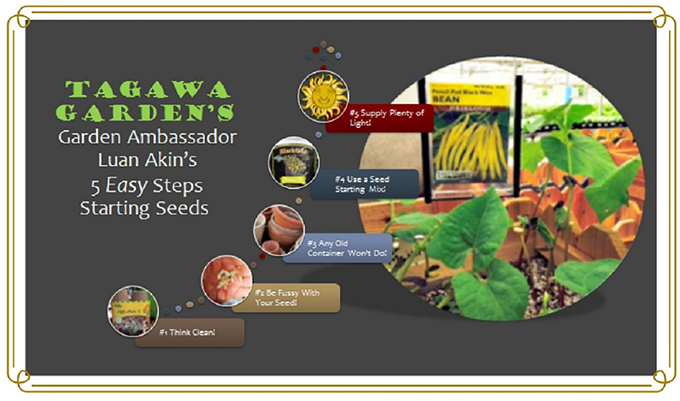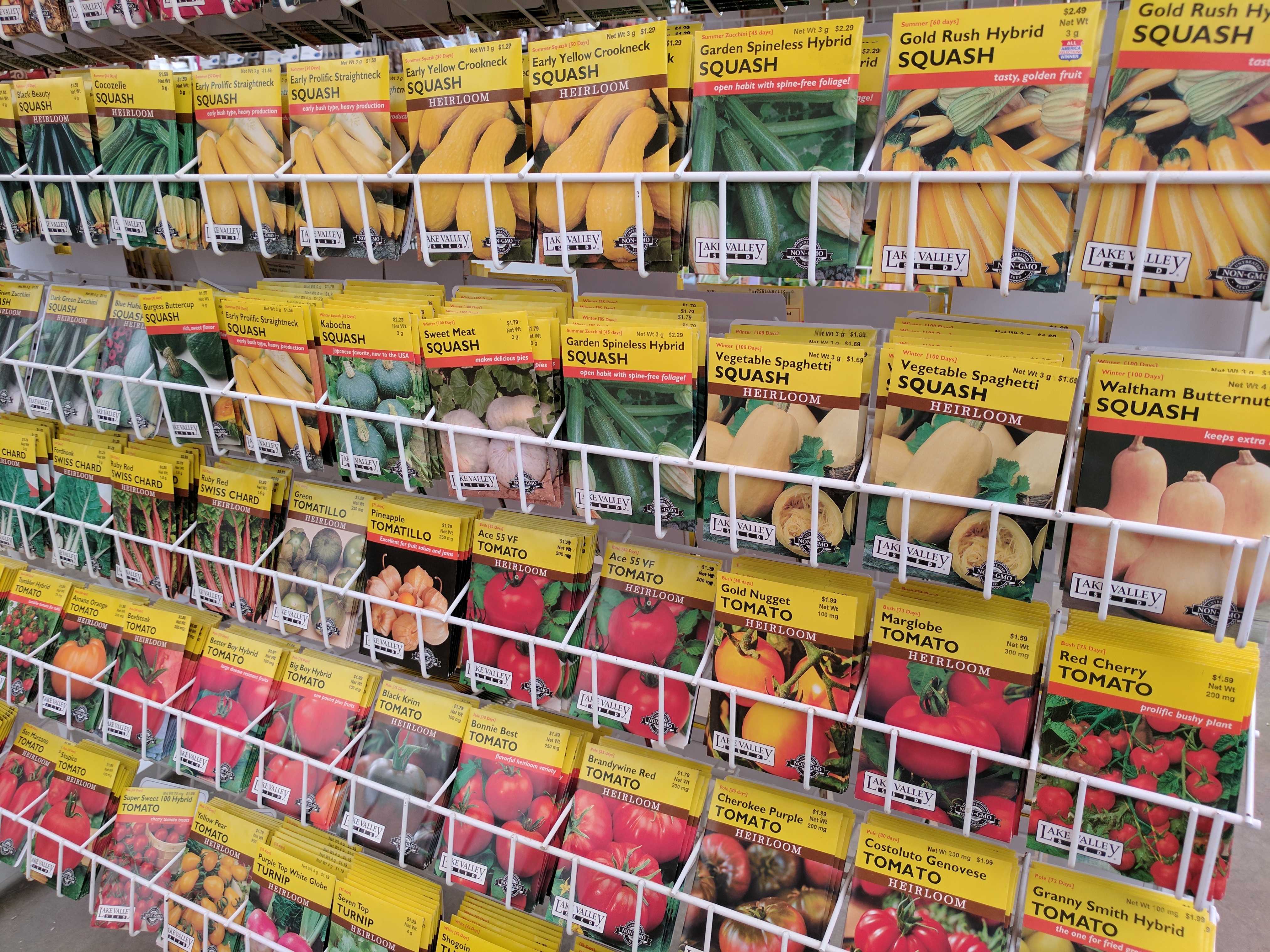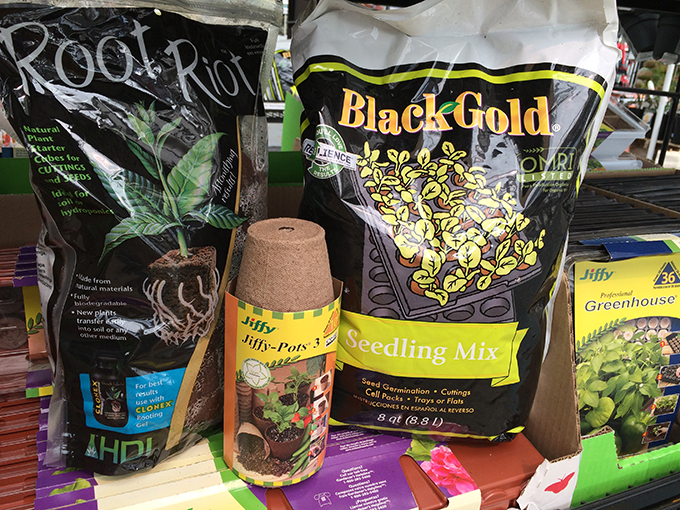Have you ever really thought about how amazing seeds are? They’re little powerhouses that are clearly one of the wonders of nature. Tapping into that wonder… starting your own plants from seed indoors long before you can be sowing and growing then outside… is a great way to get a jump on the gardening season.
Tip #1: Think clean.
I’m talking clean, fresh seed… clean growing containers… and clean seed-starting mix. As much as a lot of us like to go get down and dirty in the garden, starting seeds indoors needs to be more hygenic. It’s all about keeping the tiny seedlings healthy.
Tip #2: Be fussy about your seed! Know what you’re getting.
Seed packets are labeled with the year they’re packaged for use. If it’s stored properly, meaning it’s kept cool and dry, seed can be used in following seasons. But older seed and poorly-stored seed can germinate poorly. That makes fresh seed from reputable companies your best bet.
Tagawa Gardens carries a huge assortment of vegetable seed, herb seed and flower seed choices from companies like Botanical Interests and Lake Valley. Both are based here in Colorado. (We love keeping our gardening dollars local!)
The seed packets themselves are a wealth of information, including planting instructions, how long the seeds take to sprout and when you can expect to harvest… even illustrations of what the tiny seedlings will look like so you don’t mistake them for a passing weed. Save the seed packets! Spare yourself the frustration of forgetting all of these helpful hints. I don’t know about you, but my brain is cluttered enough as it is…
Tip #3: Don’t use just any old thing for a container.
Clean containers with good drainage (and I’m emphasizing the “good drainage” part) are essential. They can make the difference between success and failure of your seeds. Cell-packs are light-weight plastic containers divided into separate compartments. They’re great for starting a lot of seeds at once. The cell-packs fit perfectly inside a larger tray that comes with its own clear dome to hold in essential humidity when the seeds are first planted. Once the seeds emerge, the domes should be removed.
Peat pots and peat pellets are a great choice for starting seeds, too. (And watching the peat pellets expand when you water them is entertaining no matter your age. Then again, maybe I need to get out more…) Both the peat pots and the expanded pellets will decompose and can be potted directly into large pots or garden beds once the weather warms up. I do find it helpful to gently make a few vertical cuts in the peat pots, top to bottom, when you plant them to give the roots an especially easy route out into the surrounding soil.
Tip #4: Seed-starting what? Seed-starting “mix.”
We give our plants “soil” as they begin to grow up, but these little babies we’re trying to start need something special. That’s why using a sterile seed-starting mix should be standard procedure when you want to grow your own seedlings. Based on our own experience and feedback from our customers, Tagawa Gardens highly recommends BlackGold Seedling Mix. It’s organic, and seeds love it!
Starting the seeds in a sterile medium helps you avoid some of the fungal diseases that can kill tiny seedlings just as they’ve begun to grow. The most common problem is called “damping off.” It attacks the tender seedlings right at the soil line. It’ll make you crazy! The stalks collapse and die, even though the upper portions of the tiny plants look perfectly healthy. Damping off sneaks up like a thief in the night and turns healthy seedlings into gonners. Dang!
Keep your seedlings moist but not soggy and give them plenty of fresh air. Do they want higher humidity? Yes. But still, stagnant air? No!
Tip #5: Don’t skimp on the light!
It happens all too often: Enthusiastic gardeners do everything right, but then underestimate how much light emerging seedlings need. They need a lot! Most windowsills won’t do. All home-garden plants need twelve to fourteen hours of very bright when their seeds are first emerging.
Investing in a top-notch lighting system can bring years of seed-starting success. Tagawa Gardens has a wide variety of specialty lights and fixtures and the expert advice that will make your seed-starting efforts pay off!







